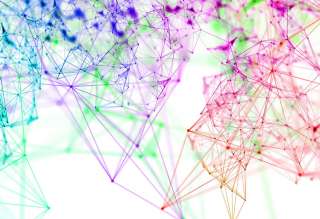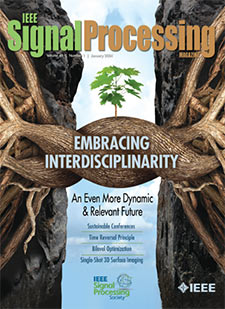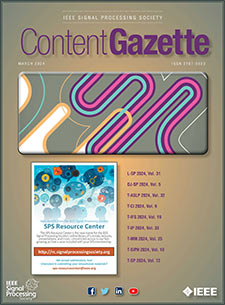- Our Story
- Publications & Resources
- Publications & Resources
- Publications
- IEEE Signal Processing Magazine
- IEEE Journal of Selected Topics in Signal Processing
- IEEE Signal Processing Letters
- IEEE/ACM Transactions on Audio Speech and Language Processing
- IEEE Transactions on Computational Imaging
- IEEE Transactions on Image Processing
- IEEE Transactions on Information Forensics and Security
- IEEE Transactions on Multimedia
- IEEE Transactions on Signal and Information Processing over Networks
- IEEE Transactions on Signal Processing
- IEEE TCI
- IEEE TSIPN
- Data & Challenges
- Submit Manuscript
- Guidelines
- Information for Authors
- Special Issue Deadlines
- Overview Articles
- Top Accessed Articles
- SPS Newsletter
- SigPort
- SPS Resource Center
- Publications Feedback
- Publications FAQ
- Blog
- News
- Dataset Papers
- Conferences & Events
- Community & Involvement
- Professional Development
- For Volunteers
- Information for Authors-OJSP
-
Home
An Exciting Juncture for Signal Processing Research: On Building Bridges, Challenges, and Opportunities
Conferences Events IEEE JSTSP Article IEEE Signal Processing Magazine IEEE TIFS Article IEEE TMM Article IEEE TSP Article Jobs in Signal Processing Lectures Machine Learning Seasonal Schools Signal Processing News SPM Article SPS Distinguished Lectures SPS Newsletter Article SPS Webinar SPS Webinars SPS Webinar Series Webinar webinars -
Our Story
What is Signal Processing?

The technology we use, and even rely on, in our everyday lives –computers, radios, video, cell phones – is enabled by signal processing. Learn More » -
Publications & Resources
-
SPS Resources
- Signal Processing Magazine The premier publication of the society.
- SPS Newsletter Monthly updates in Signal Processing
- SPS Resource Center Online library of tutorials, lectures, and presentations.
- SigPort Online repository for reports, papers, and more.
- SPS Feed The latest news, events, and more from the world of Signal Processing.
-
SPS Resources
-
Conferences & Events
-
Community & Involvement
-
Membership
- Join SPS The IEEE Signal Processing Magazine, Conference, Discounts, Awards, Collaborations, and more!
- Chapter Locator Find your local chapter and connect with fellow industry professionals, academics and students
- Women in Signal Processing Networking and engagement opportunities for women across signal processing disciplines
- Students Scholarships, conference discounts, travel grants, SP Cup, VIP Cup, 5-MICC
- Young Professionals Career development opportunities, networking
- Get Involved
-
Technical Committees
- Applied Signal Processing Systems
- Audio and Acoustic Signal Processing
- Bio Imaging and Signal Processing
- Computational Imaging
- Image Video and Multidimensional Signal Processing
- Information Forensics and Security
- Machine Learning for Signal Processing
- Multimedia Signal Processing
- Sensor Array and Multichannel
- Signal Processing for Communication and Networking
- Signal Processing Theory and Methods
- Speech and Language Processing
- Technical Working Groups
- More TC Resources
-
Membership
-
Professional Development
-
Professional Development
- Mentoring Experiences for Underrepresented Young Researchers (ME-UYR)
- Micro Mentoring Experience Program (MiME)
- Distinguished Lecturer Program
- Distinguished Lecturers
- Distinguished Lecturer Nominations
- Past Lecturers
- Distinguished Industry Speaker Program
- Distinguished Industry Speakers
- Distinguished Industry Speaker Nominations
- Industry Resources
- IEEE Training Materials
- Jobs in Signal Processing: IEEE Job Site
-
Career Resources
- SPS Education Program Educational content in signal processing and related fields.
- Distinguished Lecturer Program Chapters have access to educators and authors in the fields of Signal Processing
- PROGRESS Initiative Promoting diversity in the field of signal processing.
- Job Opportunities Signal Processing and Technical Committee specific job opportunities
- Job Submission Form Employers may submit opportunities in the area of Signal Processing.
-
Professional Development
-
For Volunteers
-
For Board & Committee Members
- Board Agenda/Minutes* Agendas, minutes and supporting documentation for Board and Committee Members
- SPS Directory* Directory of volunteers, society and division directory for Board and Committee Members.
- Membership Development Reports* Insight into the Society’s month-over-month and year-over-year growths and declines for Board and Committee Members
-
For Board & Committee Members
Popular Pages
Today's:
- Submit a Manuscript
- (MLSP 2024) 2024 IEEE International Workshop on Machine Learning for Signal Processing
- Information for Authors
- IEEE Signal Processing Letters
- (SLT 2024) 2024 IEEE Spoken Language Technology Workshop
- SPS Scholarship Program
- IEEE Transactions on Multimedia
- IEEE/ACM Transactions on Audio Speech and Language Processing
- IEEE Transactions on Image Processing
- IEEE Transactions on Information Forensics and Security
- IEEE Signal Processing Magazine
- Conference Call for Papers
- Information for Authors-SPL
- Signal Processing 101
- IEEE Transactions on Signal Processing
All time:
- Information for Authors
- Submit a Manuscript
- IEEE Transactions on Image Processing
- 404 Page
- IEEE/ACM Transactions on Audio Speech and Language Processing
- IEEE Transactions on Information Forensics and Security
- IEEE Transactions on Multimedia
- IEEE Signal Processing Letters
- IEEE Transactions on Signal Processing
- Conferences & Events
- IEEE Journal of Selected Topics in Signal Processing
- Information for Authors-SPL
- Conference Call for Papers
- Signal Processing 101
- IEEE Signal Processing Magazine
Last viewed:
- IEEE Transactions on Computational Imaging
- (ICASSP 2025) 2025 IEEE International Conference on Acoustics, Speech and Signal Processing
- Signal Processing at 75: More Dynamic and Pervasive Than Ever
- An Exciting Juncture for Signal Processing Research: On Building Bridges, Challenges, and Opportunities
- Statistical Principles of Time Reversal
- Going for Sustainable Conferences
- Learning From the Hidden Letters
- Publications & Resources
- IEEE Signal Processing Letters
- About IEEE Transactions on Signal Processing
- Signal Processing Cup
- Oymak, SametView (California Institute of Technology) “Convex relaxation for low-dimensional representation: Phase transitions and limitations” (2015)
- SPS Staff
- IVMSP TC Home
- (MLSP 2024) 2024 IEEE International Workshop on Machine Learning for Signal Processing
Recent Patents in Signal Processing (December 2016) – Point Cloud Processing
You are here
Newsletter Menu
Newsletter Categories
Top Reasons to Join SPS Today!
1. IEEE Signal Processing Magazine
2. Signal Processing Digital Library*
3. Inside Signal Processing Newsletter
4. SPS Resource Center
5. Career advancement & recognition
6. Discounts on conferences and publications
7. Professional networking
8. Communities for students, young professionals, and women
9. Volunteer opportunities
10. Coming soon! PDH/CEU credits
Click here to learn more.
News and Resources for Members of the IEEE Signal Processing Society
Recent Patents in Signal Processing (December 2016) – Point Cloud Processing
For our December 2016 issue, we cover recent patents dealing with point cloud processing, including point cloud segmentation, mesh generation, point cloud registration and object separation.
In patent no 9,508,186 a method, apparatus, system, and computer readable storage medium provide the ability to pre-segment point cloud data. Point cloud data is obtained and segmented. The segment information is stored. An indexing structure is created and instantiated with the point cloud data and the segment information. Based on the segment information, a determination is made regarding points needed for shape extraction. Needed points are fetched from the indexing structure and used to extract shapes. The extracted shapes are used to cull points from the point cloud data.
In patent no. 9,412,040 a method extracts planes from three-dimensional (3D) points by first partitioning the 3D points into disjoint regions. A graph of nodes and edges is then constructed, wherein the nodes represent the regions and the edges represent neighborhood relationships of the regions. Finally, agglomerative hierarchical clustering is applied to the graph to merge regions belonging to the same plane.
In the embodiment no. 9,406,138, a technique is provided for semi-automatically extracting a polyline from a linear feature in a point cloud. The user may provide initial parameters, including a point about the linear feature and a starting direction. A linear feature extraction process may automatically follow the linear feature beginning in the starting direction from about the selected point. The linear feature extraction process may attempt to follow a linear segment of the linear feature. If some points may be followed that constitute a linear segment, a line segment modeling the linear segment is created. The linear feature extraction process then determines whether the end of the linear feature has been reached. If the end has not been reached, the linear feature extraction process may repeat. If the end has been reached, the linear feature extraction process may return the line segments and create a polyline from them.
In the patent no. 9,355,462 a system and method of estimation motion of a machine is disclosed. The method may include determining a first point cloud and a second point cloud corresponding to an environment in a vicinity of the machine. The method may further include generating a first extended gaussian image (EGI) for the first point cloud and a second EGI for the second point cloud. The method may further include determining a first EGI segment based on the first EGI and a second EGI segment based on the second EGI. The method may further include determining a first two dimensional distribution for points in the first EGI segment and a second two dimensional distribution for points in the second EGI segment. The method may further include estimating motion of the machine based on the first and second two dimensional distributions.
Invention no. 9,292,961 presents a method for detecting an opening in a structure represented by a three-dimensional point cloud, which may include the steps of: (1) creating a three-dimensional point cloud map of a scene, the three-dimensional point cloud map including a plurality of points representing a ground plane and the structure upon the ground plane, (2) identifying an absence of points within the plurality of points representing the structure, and (3) determining whether the absence of points represents the opening in the structure.
In patent no. 9,265,434 3-dimensional cardiac reconstruction is carried out by catheterizing a heart using a probe with a mapping electrode, and acquiring electrical data from respective locations in regions of interest in the heart, representing the locations of the electrical data as a point cloud, reconstructing a model of the heart from the point cloud, applying a set of filters to the model to produce a filtered volume, segmenting the filtered volume to define components of the heart, and reporting the segmented filtered volume.
In patent no. 9,251,399 a method of separating an object in a three dimension point cloud is presented, including acquiring a three dimension point cloud image on an object using an image acquirer, eliminating an outlier from the three dimension point cloud image using a controller, eliminating a plane surface area from the three dimension point cloud image, of which the outlier has been eliminated using the controller, and clustering points of an individual object from the three dimension point cloud image, of which the plane surface area has been eliminated using the controller.
If you have an interesting patent to share when we next feature patents related to point cloud processing, or if you are especially interested in a signal processing research field that you would want to be highlighted in this section, please send email to Csaba Benedek (benedek.csaba AT sztaki DOT mta DOT hu).
References
Number: 9,508,186
Title: Pre-segment point cloud data to run real-time shape extraction faster
Inventors: Poelman; Ronald (San Rafael, CA), Akman; Oytun (Kensington, CA)
Issued: November 29, 2016
Assignee: Autodesk, Inc. (San Rafael, CA)
Number: 9,412,040
Title: Method for extracting planes from 3D point cloud sensor data
Inventors: Feng; Chen (Ann Arbor, MI), Taguchi; Yuichi (Arlington, MA), Kamat; Vineet (Cambridge, MA)
Issued: August 9, 2016
Assignee: Mitsubishi Electric Research Laboratories, Inc. (Cambridge, MA)
Number: 9,406,138
Title: Semi-automatic polyline extraction from point cloud
Inventors: St-Pierre; Mathieu (Ste-Brigitte De Laval, CA)
Issued: August 2, 2016
Assignee: Bentley Systems, Incorporated (Exton, PA)
Number: 9,355,462
Title: Motion estimation system utilizing point cloud registration
Inventors: Chen; Qi (Dunlap, IL)
Issued: May 31, 2016
Assignee: Caterpillar Inc. (Peoria, IL)
Number: 9,292,961
Title: System and method for detecting a structural opening in a three dimensional point cloud
Inventors: Korchev; Dmitriy V. (Irvine, CA), Zhang; Zhiqi (Santa Clara, CA), Owechko; Yuri (Newbury Park, CA)
Issued: March 22, 2016
Assignee: The Boeing Company (Chicago, IL)
Number: 9,265,434
Title: Dynamic feature rich anatomical reconstruction from a point cloud
Inventors: Merschon; Asaf (Karkur, IL), Massarwa; Fady (Baka El Gharbiya, IL)
Issued: February 23, 2016
Assignee: Biosense Webster (Israel) Ltd. (Yokneam, Il)
Number: 9,251,399
Title: Method of separating object in three dimension point cloud
Inventors: Hwang; Hyo Seok (Seoul, KR), Roh; Kyung Shik (Seongnam-si, KR), Yoon; Suk June (Seoul, KR)
Issued: February 2, 2016
Assignee: Samsung Electronics Co., Ltd. (Gyeonggi-Do, KR)
Open Calls
Conference News
PhD Theses
News & Announcements
Research Opportunities
Society News
SPS on Twitter
- DEADLINE EXTENDED: The 2023 IEEE International Workshop on Machine Learning for Signal Processing is now accepting… https://t.co/NLH2u19a3y
- ONE MONTH OUT! We are celebrating the inaugural SPS Day on 2 June, honoring the date the Society was established in… https://t.co/V6Z3wKGK1O
- The new SPS Scholarship Program welcomes applications from students interested in pursuing signal processing educat… https://t.co/0aYPMDSWDj
- CALL FOR PAPERS: The IEEE Journal of Selected Topics in Signal Processing is now seeking submissions for a Special… https://t.co/NPCGrSjQbh
- Test your knowledge of signal processing history with our April trivia! Our 75th anniversary celebration continues:… https://t.co/4xal7voFER
Home | Sitemap | Contact | Accessibility | Nondiscrimination Policy | IEEE Ethics Reporting | IEEE Privacy Policy | Terms | Feedback
© Copyright 2024 IEEE – All rights reserved. Use of this website signifies your agreement to the IEEE Terms and Conditions.
A not-for-profit organization, IEEE is the world's largest technical professional organization dedicated to advancing technology for the benefit of humanity.








